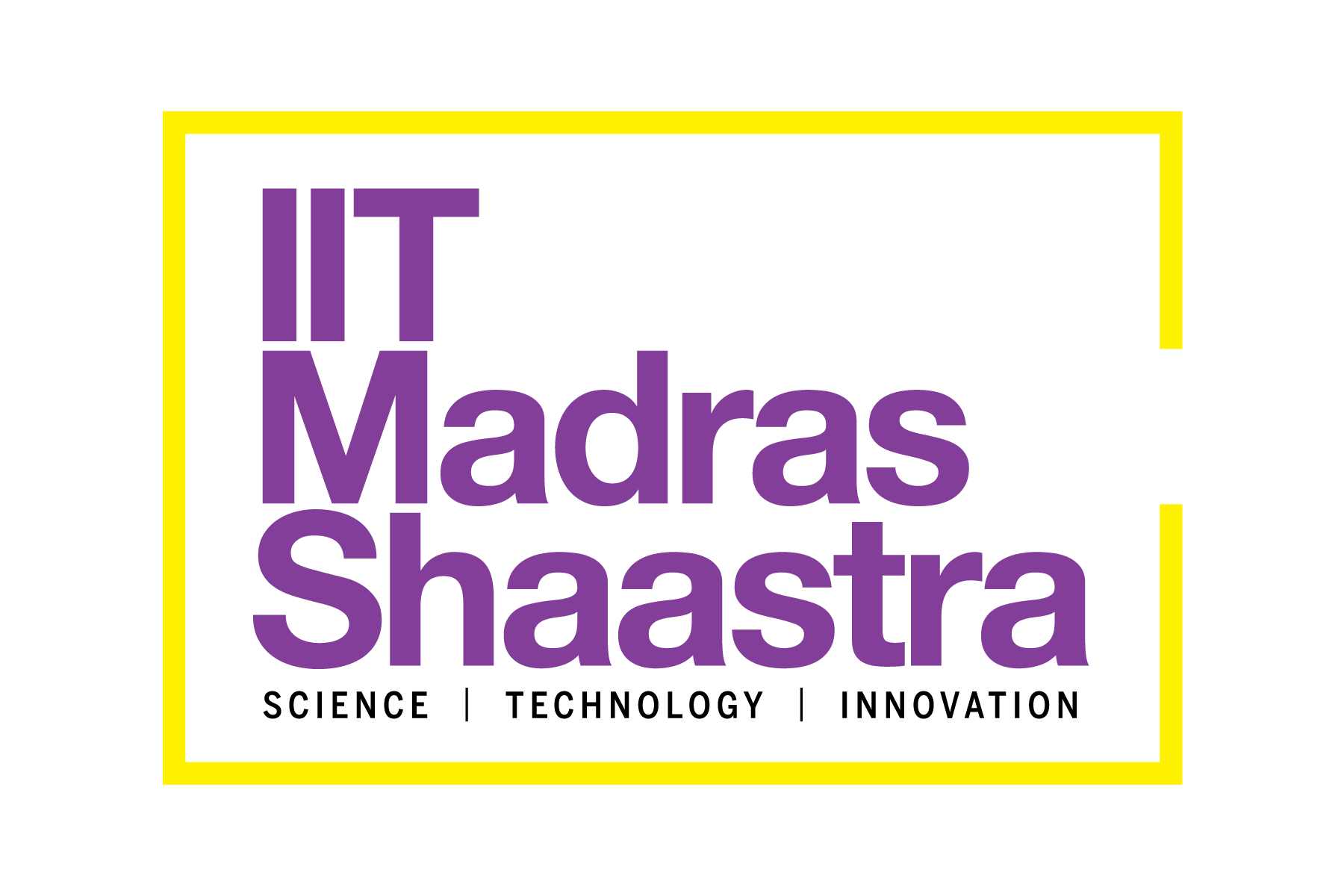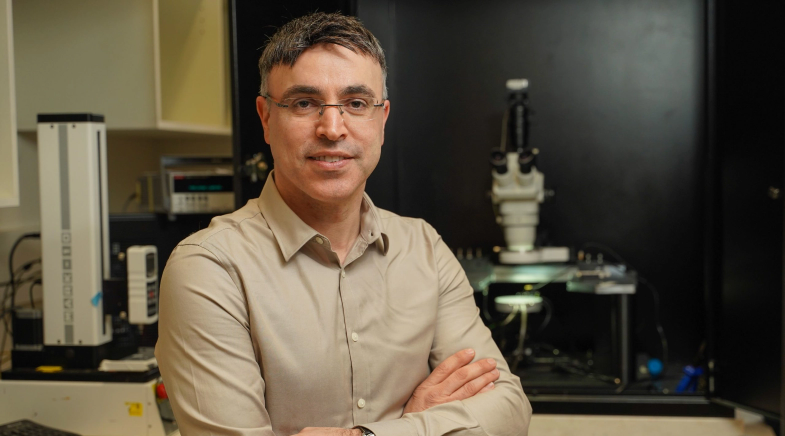Virtue in virtual labs
-
- from Shaastra :: vol 04 issue 08 :: Sep 2025

AI agents that can function autonomously are working with scientists to boost research.
The scientist is in the laboratory. But there is work to be done elsewhere, too, and one cannot be in two places at the same time. Help comes in the form of a virtual lab and a posse of virtual scientists, enabled by artificial intelligence (AI). Such sophisticated AI agents are uncovering knowledge, formulating novel research hypotheses and proposals, and engaging in debates and discussions with their human counterparts.
Researchers have been exploring the role of large language models (LLMs) in aiding researchers across diverse fields. Now, a team at Stanford University has created a virtual lab consisting of an AI principal investigator (PI) agent that guides a team of LLM scientist-agents through a series of research meetings. These virtual scientists are capable of retrieving data, using diverse research tools and communicating with each other as well as with human scientists.
In April 2025, researchers at NASA's Goddard Space Flight Center unveiled an agentic AI system exclusively for astrobiology.
"As a professor, I have many ideas but limited time to explore them," says James Zou, Associate Professor at Stanford's Department of Biomedical Data Science. "I thought it would be wonderful if we could create a virtual lab of AI scientist agents to mirror my physical lab at Stanford. Then I can have the virtual lab tackle all these projects I don't have time to do."
Zou and his colleagues recently demonstrated how the virtual lab of AI agents could work independently to computationally design effective nanobodies for SARS-CoV-2 — which the agents executed within just a few days. The scientist subsequently validated these nanobodies — antibody fragments with single monomers with therapeutic potential — through experiments. "It would have taken weeks, if not months, for us to do this ourselves," says Zou. The work was published in a recent issue of Nature (bit.ly/Virtuallab-Zou).
Scientific breakthroughs need meaningful interdisciplinary collaborations. For instance, the paper by John Jumper and others, which introduced AlphaFold2 and led to the 2024 Nobel Prize in Chemistry, included work by 34 researchers with expertise across diverse fields — from computer science and machine learning to bioinformatics and structural biology. Many works of profound significance in theoretical physics often have a few hundred contributors from institutions spread across the world.
Putting together such teams from different scientific disciplines and with diverse research priorities is often a challenge. The Stanford team created the virtual lab as a collaboration between a human researcher and a team of LLM agents to conduct sophisticated, interdisciplinary research.
The virtual lab created a novel computational nanobody design platform by combining the expertise of different LLMs, such as protein language model ESM (Evolutionary Scale Modeling), protein folding model AlphaFold-Multimer and computational biology software Rosetta. The virtual lab designed as many as 92 new nanobodies. These functional nanobodies exhibited promising binding profiles across various SARS-CoV-2 variants. Two nanobodies were particularly significant, as they showed improved binding to recent SARS-CoV-2 variants, such as the JN.1 and KP.3 variants.
The system works as follows: a human researcher provides high-level guidance for the LLM agents. The LLM agents decide on the general research direction and design solutions to specific research problems. The human researcher defines two general AI agents: a PI and a scientific critic. The PI then automatically creates a set of scientific AI agents, depending on the scientific topic pursued.
LIKE ANY LAB
The virtual lab begins a research project just like any other human lab — with a problem to solve, presented by the lab's human team leader. The human researcher gives the AI PI a scientific challenge, and the AI PI takes it from there.
Just like their human counterparts, these AI scientist agents, too, hold team and individual meetings. While the human researcher provides the initial agenda to guide the discussion, the AI agents take over from there.
"It's the AI PI's job to figure out the other agents and expertise needed to tackle the project," Zou says. For the SARS-CoV-2 project, for instance, the PI agent created an immunology agent, a computation biology agent and a machine learning agent. And, in every project, no matter the topic, there's one agent that assumes the role of a critic. Its job is to poke holes in the theory, caution against common pitfalls and provide constructive criticism to other agents.

The AI agents discuss the broad research question and collaborate to find an answer in team meetings. Subsequently, each of these agents works more autonomously to accomplish specific tasks assigned to it either alone or in conjunction with the scientific critic, which provides critical feedback. Both team and individual meetings are conducted multiple times in parallel, followed by an aggregation meeting to generate more robust answers.
The AI scientist agents decide what sort of research tools they need to use, says Zou. "Our main learning is that the teams of AI scientists can solve challenging open-ended research problems," says the Stanford scientist. They can potentially accelerate any area of research and development where computational modelling is helpful. This includes physics, chemistry, material science, life sciences and more, he holds.
At Stanford, a virtual lab of AI agents could work independently to computationally design effective nanobodies for SARS-CoV-2.
While the Stanford team's achievement is fairly advanced, others in the area have also made their presence felt. In February 2025, technology giant Google launched a multi-agent AI system called AI co-scientist, which can act as a virtual scientific collaborator of scientists in generating novel hypotheses and research proposals. Built on Google's own intelligent AI model, Gemini 2.0, AI co-scientist is capable of mirroring the reasoning process that relies on scientific methods. Going well beyond standard literature review and summarisation, the AI co-scientist system is capable of uncovering original knowledge and formulating research hypotheses and proposals, building upon prior evidence.
Google's agentic AI has repurposed a drug to treat acute myeloid leukaemia, identified a potential treatment for liver fibrosis, and unravelled mechanisms of antimicrobial resistance. All these findings were subsequently validated through wet-lab experiments by scientists (bit.ly/Co-scientist).
LOOKING FOR LIFE
AI tools capable of doing autonomous research are all set to join humankind's search for life elsewhere in the universe. In April 2025, a team of researchers led by astrobiologists at NASA's Goddard Space Flight Center in Maryland unveiled an agentic AI system called AstroAgents exclusively for astrobiology.
According to a preprint (bit.ly/AstroAgents) posted in March this year, AstroAgents comprises eight collaborative AI agents, including a data analyst, a planner, three domain scientists, an accumulator, a literature reviewer, and a critic.
Each of these AI agents has specific tasks to perform. The data analyst will interpret the data, and the planner will delegate specific segments to the scientist agents for in-depth exploration. The accumulator will then collect and remove duplicated material from the generated hypotheses. The literature reviewer will identify relevant literature. The critic will then evaluate these hypotheses, offering rigorous suggestions for improvement.
Its creators conducted two experiments using two LLMs — Gemini 2.0 Flash and Claude Sonnet 3.5 — to power AstroAgents. In the one powered by Claude LLM, the researchers supplied the virtual agents with 10 carefully selected research papers in the field of astrobiology. This helped develop as many as 48 hypotheses. In the second experiment, using Gemini, the agents were given the same set of research papers and an astrobiology book, and the agents produced 101 hypotheses.
The creators of AstroAgents subsequently evaluated these hypotheses with the help of a human astrobiology expert. The research ideas generated by Claude had fewer logical errors and were more consistent with the literature provided. In the Gemini LLM exercise, 36 hypotheses were found to be plausible, and 24 among them were deemed novel when human scientists analysed them.
The creators of AstroAgents hope to utilise the AI tool for analysing samples that NASA plans to retrieve from Mars in the near future. Scoring through mass spectroscopy data collected by planetary missions, AstroAgents will be able to identify chemical signatures of past and present life outside our planet, they hope.
Have a
story idea?
Tell us.
Do you have a recent research paper or an idea for a science/technology-themed article that you'd like to tell us about?
GET IN TOUCH














